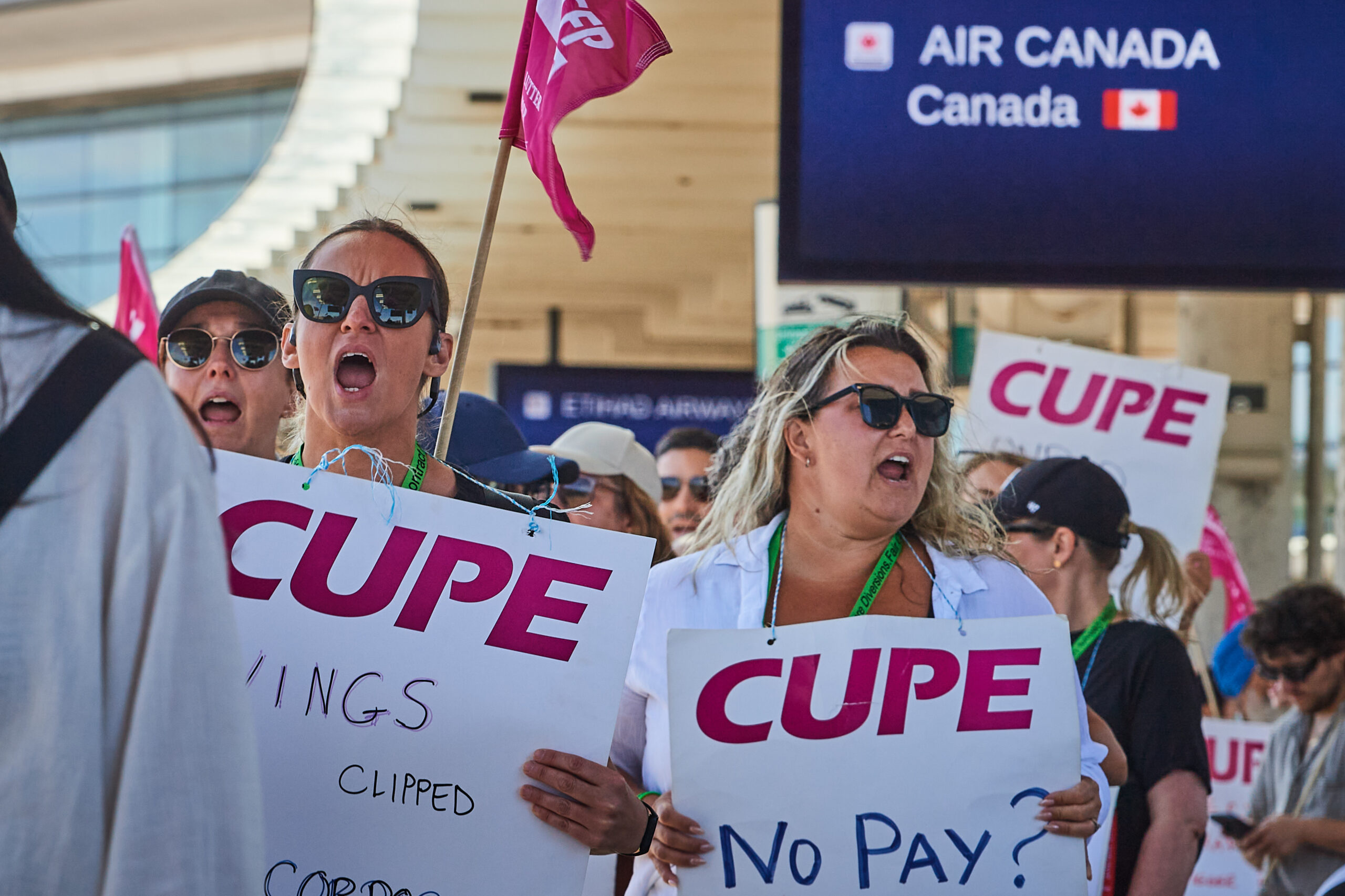Politics
Air Canada Strike Sparks Controversy Over Government Intervention

Thousands of Air Canada passengers faced significant disruptions as members of the Canadian Union of Public Employees (CUPE) initiated a strike following stalled contract negotiations. The strike, which began on March 9, 2024, involved approximately 10,000 flight attendants and led to widespread flight cancellations over the weekend, leaving many travelers stranded and frustrated.
Wesley Lesosky, head of CUPE’s Air Canada Component, criticized the government’s actions, stating, “The Liberals are violating our Charter rights to take job action and give Air Canada exactly what they want: hours and hours of unpaid labour from underpaid flight attendants, while the company pulls in sky-high profits and extraordinary executive compensation.” His remarks reflect a growing discontent within the union regarding the handling of labour disputes by the federal government.
In response to the strike, Patty Hajdu, Canada’s Minister of Jobs, ordered the parties back to work under Section 107 of the federal Labour Code, stating that the strike posed a “negative impact” on the Canadian economy. “Now is not the time to take risks with our economy,” Hajdu emphasized during a news conference in Ottawa. This decision followed a meeting with both Air Canada and union representatives, where it became clear that negotiations had broken down.
The invocation of Section 107 has raised eyebrows, as this legislative tool has become increasingly common for the Liberal government. Critics argue that this reliance on government intervention undermines the rights of workers to negotiate in good faith. The Canadian Press reported that Hajdu’s call for binding arbitration came just 12 hours into the strike, leading to accusations that the government is prioritizing corporate interests over workers’ rights.
Despite the back-to-work order, CUPE members continued their strike actions, which the Canada Industrial Relations Board labeled as “unlawful.” This prompted union leaders, including Mark Hancock, to indicate their determination to proceed with the strike, even in the face of potential fines or arrests. The situation has created a significant rift between the union and the government, with many union members feeling their rights are being ignored.
The perception that the federal government is siding with large corporations is echoed by statements from other unions. Unifor, Canada’s largest private-sector union, criticized the government’s actions as sending a detrimental message to employers about the necessity for fair bargaining. Many flight attendants are reportedly dissatisfied with their compensation, which averages around $28.64 per hour, according to the job search website Indeed.com. Comments on the site reflect a growing sense of stress among employees, who often report being required to work unpaid hours.
This ongoing dispute has not only affected the airline’s operation but has also sparked a public petition demanding the removal of Minister Hajdu, initiated by Air Canada flight attendant Tanisha Smith. As of Monday afternoon, this petition had garnered over 27,000 signatures, illustrating the depth of discontent among the workforce.
As the situation unfolds, the government faces criticism for its heavy-handed approach to labour disputes. Observers note that the frequent use of Section 107 could lead to lasting distrust between unions and the federal government, further complicating future negotiations. The Carney government finds itself navigating a complex landscape as it attempts to balance economic stability with the rights of workers.
The ongoing Air Canada strike serves as a pivotal moment in Canadian labour relations, highlighting the tensions between government intervention and the rights of unions to advocate for better working conditions. As negotiations stall, both passengers and employees are left to grapple with the consequences of a rising conflict that has yet to reach resolution.
-

 Politics4 weeks ago
Politics4 weeks agoSecwepemc First Nation Seeks Aboriginal Title Over Kamloops Area
-

 World5 months ago
World5 months agoScientists Unearth Ancient Antarctic Ice to Unlock Climate Secrets
-

 Entertainment5 months ago
Entertainment5 months agoTrump and McCormick to Announce $70 Billion Energy Investments
-

 Science5 months ago
Science5 months agoFour Astronauts Return to Earth After International Space Station Mission
-

 Lifestyle5 months ago
Lifestyle5 months agoTransLink Launches Food Truck Program to Boost Revenue in Vancouver
-

 Technology3 months ago
Technology3 months agoApple Notes Enhances Functionality with Markdown Support in macOS 26
-

 Lifestyle3 months ago
Lifestyle3 months agoManitoba’s Burger Champion Shines Again Amid Dining Innovations
-

 Top Stories2 months ago
Top Stories2 months agoUrgent Update: Fatal Crash on Highway 99 Claims Life of Pitt Meadows Man
-

 Politics4 months ago
Politics4 months agoUkrainian Tennis Star Elina Svitolina Faces Death Threats Online
-

 Sports5 months ago
Sports5 months agoSearch Underway for Missing Hunter Amid Hokkaido Bear Emergency
-

 Politics5 months ago
Politics5 months agoCarney Engages First Nations Leaders at Development Law Summit
-

 Technology5 months ago
Technology5 months agoFrosthaven Launches Early Access on July 31, 2025




















